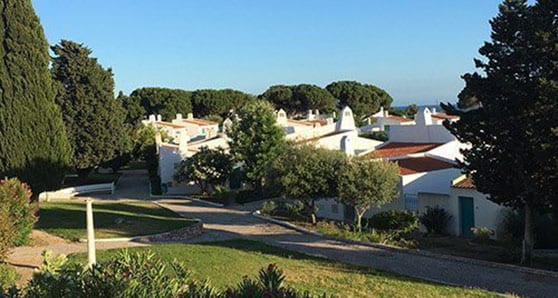 Imagine golden sand, 25C with a clear blue sky in May, and the cleanest blue-green ocean you’ve ever seen.
Imagine golden sand, 25C with a clear blue sky in May, and the cleanest blue-green ocean you’ve ever seen.
Add boardwalks that stretch for kilometres across salt marshes and sand dunes. Every so often, include colonies of beach lounge chairs, arrayed under stretched blue canvas canopies.
Add swirls of swallows and gulls above, and cue the billing and cooing of doves in the Cypress trees.
Run this land- and ocean-scape about 150 km east-west and 45 km north-south on the extreme southern coast of Portugal.
Call it the Algarve.
It’s only about one-eighth of the country and its mainstay economy is tourism, although surrounding farms supply superb vegetables and animal proteins, and the local wines are superb.
Offshore, the ocean supplies what is famous as the best seafood in Europe. Possibly the world.
The working language of the Airbnb operations, hotels and restaurants is English, but all the languages of the European Union can sort of be spoken here.
The dominant ambience is one of multicultural tolerance. There is a pleasant lack of hubris, orthodoxy or braggadocio.
The public beaches are not filled to overflowing in May. At this time, a blend of local Portuguese tourism, retired Irish and English couples, and young eurozone families prevails. Nobody strolls about totally nude but several woman of varying ages are topless in the sun. The beach atmosphere is relaxed and unhurried.
Walking entrepreneurs hawk beach blankets, sunglasses, selfie sticks, pastel de nata (Portuguese custard tarts fresh from the Algarve ovens), and impromptu towel-side massage services. Many tourists listen patiently to the hawkers’ spiels and purchases are made all day. Deals are sealed with smiles, handshakes and friendly name exchanges.
The name Algarve is derived from al-Gharb – Arabic for “the western lands.” Just like in southern Spain’s Andalusia region, the Algarve is filled with contemporary architectural evidence of the old Moorish influence. This includes omnipresent blue and white mosaic tiles, quaint stucco houses with whimsical chimney pots, evocative archways, and baked red clay roof tiles as far as the eye can see.
There is one momentous difference with the Spanish Andalusian architectural imprint in towns like Sevilla, Granada, Cordoba, Malaga and Ronda. Simply put, very little of the built Algarve environment predates 1755. Nov. 1, 1755, All Saints’ Day, to be exact.
On that day, an horrific earthquake levelled churches, houses, public buildings and squares, and almost all of the evidence of the earlier Moorish empire in the Algarve. Over 60,000 people lost their lives in the quake. Many were congregating in churches that collapsed as the violent shaking continued for several minutes.
As a result, the vast majority of public and private architecture in the Algarve was built post-1755.
While written history records the exploits of the prior Phoenician, Carthaginian, Roman, Moorish and Christian civilizations on this coast, one colossal seismic shake basically erased it from the visual memory of the Algarve’s architectural landscape.
The food landscape of the Algarve, however, remains blissfully intact.
Local family-owned seafood restaurants in towns like Sagres, Lagos, Alvor, Portimao and Faro have famous daily-catch menus that feature sea bass, golden bream, sole, turbot, crab, lobster, clams, mussels, prawns and Atlantic salmon (admittedly from Scotland). It’s customary to bring heaping trays of daily catch to table-side, where species are discussed with patrons.
Some main course selections are also featured live – in fact, in your face. Think moving, flexing, pinching crabs and lobsters just out of the live tank.
Catch-of-the-day mains like golden bream and sea bass are flensed and served table-side with a knowledgeable running commentary on their merits provided by your waiter.
While a week of beach days can easily be spent without much variation other than restaurant meals at night, and varied walks and swims during the day, a rental car can add a few daily side trips to small agricultural and fishing villages nearby.
Given the 150-km width of the Algarve, the neighbours are always close by. Almost every town and village has room-and-board options, so planning a multi-based stay is a very possible.
Arguably a first visit will be best spent in one location, so you can learn how the region really works from a local perspective.
Once you make the effort to visit, I think you’ll make the effort to return. We will!
Mike Robinson has been CEO of three Canadian NGOs: the Arctic Institute of North America, the Glenbow Museum and the Bill Reid Gallery. Mike has chaired the national boards of Friends of the Earth, the David Suzuki Foundation, and the Canadian Parks and Wilderness Society. In 2004, he became a Member of the Order of Canada.
The views, opinions and positions expressed by columnists and contributors are the author’s alone. They do not inherently or expressly reflect the views, opinions and/or positions of our publication.












